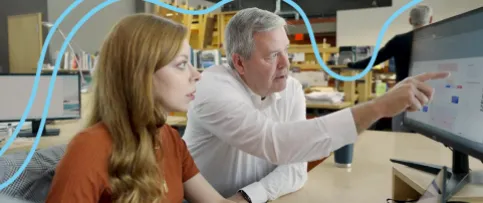You may recognize Tyler Ashworth, AIA, LEED AP BD+C, from our popular career tips webinar. Now the Washington, DC, architect is back with advice on finding an IDP-friendly firm, plus his thoughts on the intern title debate and the power of networking.
What do you love about architecture?
Architecture has always captured my imagination. As a child, I enjoyed building with Legos, Kinex, and eventually scale models of automobiles and model rockets. I am an optimist and a bit of a dreamer. I like the big picture. And what could be more full of possibilities than architecture? In some ways I look at building design as very large and complex model making—the possibility of components and finishes being endless. It’s like spilling out a tub of Legos and seeing where your creativity can take you. The most gratifying thing about what we do is seeing a physical manifestation of our labors. And also knowing that the building will positively impact a number of people.
Your firm, VOA, was recently awarded the 2014-2017 IDP Outstanding Firm Award. How can aspiring architects find a firm that will support their path to licensure?
Yes, it was quite an honor for the DC office of VOA Associates. When I joined the firm, there were already so many positive mechanisms in support of licensure. There are two things I have learned in my career thus far:
1. Not every firm is created equal and your firm doesn’t represent the profession as a whole. You might find yourself working seemingly endless hours with very little appreciation in your office now, but this doesn’t mean every office is like that.
2. “You don’t get what you deserve, you get what you negotiate.” Okay, so I stole that one from an in-flight magazine. But I would add, “… and you get what you work hard for.” The point is that being mentored and supported on your path to licensure is a two-way road that requires dialogue. You might have to initiate the conversation. You might have to push, beg, or continually ask the leaders of your firm for help or support. Eventually they will either hear you and follow through or, at worst, say no. But quiet expectations rarely achieve success.
It is in a firm’s best interest to support your professional growth. If you happen to find yourself at one that does not, maybe it is not the right firm for you.
What was your strategy for navigating the path to licensure, and how did you stick with it?
It began with two simple goals: (1) Get licensed as soon as possible after graduation, and (2) Do this before turning 30. I did, in fact, do both! When I began the process, I was lucky enough to be at a firm that supported me in a number of ways. They provided study materials and financial support for the exam, as well as plenty of opportunities to earn IDP hours.
For the ARE, I certainly took my time studying for my first exam. Based on my comfort level, I chose a division that wouldn’t be too challenging but would still provide a taste for all of the exams. With one pass under my belt, I was motivated to keep up with one exam every two months—give or take, depending on work load and life events. But I always studied, working in 30 minutes to an hour each day. It was not easy work, but I now have the freedom to return to some of my hobbies without worrying about anything getting between me and my license.
As a member of the Future Title Task Force, what are your thoughts on the intern title debate?
I have never really been a fan of the word “intern” with regards to how it’s used in our profession. I believe an intern, as commonly defined in society, is a student and/or someone who is working toward earning a full-time job. “Architect-ing,” licensed or not, is a rigorous full-time job that deserves respect at any level. That being said, I believe as strongly as ever that the title architect is one that’s earned and cannot be tossed around.
You also served as the AIAS National President. How can architecture students jump-start their career?
Simply starting a career can seem daunting in a still sluggish economy. But times have certainly improved over the last five years and things are speeding up.
For a recent graduate with little experience, employers are always looking for someone who can jump right in and use tech to help produce a set of drawings. So Revit and CAD experience are key. And yes, there are still firms using CAD. Even still, there are some firms that use entirely different platforms. The lesson is, the more well-rounded your skill sets are early on, the easier it will be to fill an employer’s needs.
Next, I would say a commitment to career development is key. You can demonstrate this by earning an LEED GA designation, having earned IDP experience through volunteer work, or having passed an exam.
Last, I have to stress the importance of networking. Market research shows that about half of job openings filled in the private sector (most architecture firms) are through referrals—and that number is rising. The majority of these openings never even make it public. Having an existing connection with one of these firms will help draw your resume to the top of the stack for consideration.
What’s the best career advice you’ve ever received?
I might still be waiting to hear “the best” advice. But the best I’ve heard so far has come from my family: “You are never done learning.” Sometimes I have to stop and remind myself of this. Even after attaining my degree and earning my license, there is still so much I don’t know. And there are endless opportunities to learn more every day.



